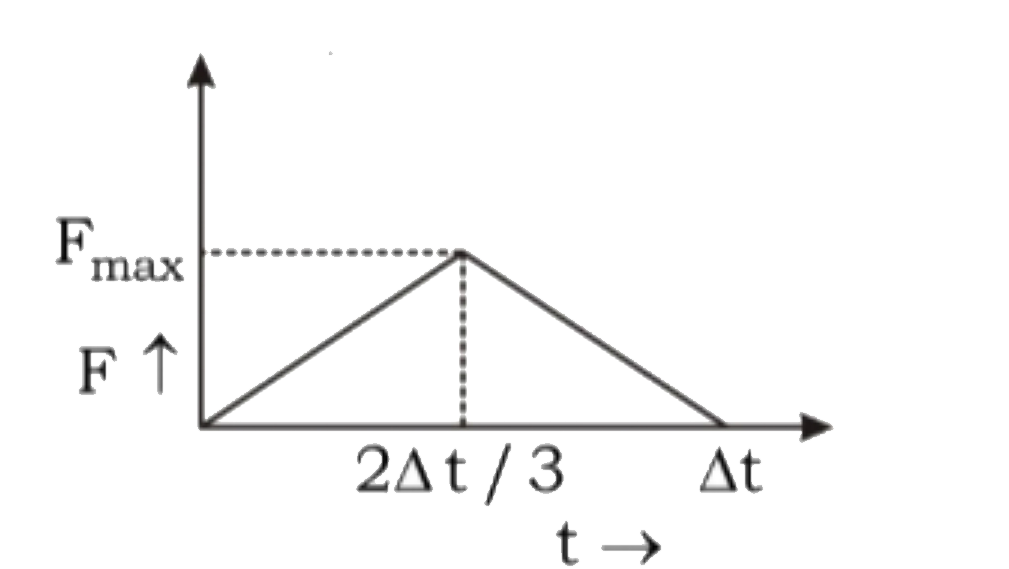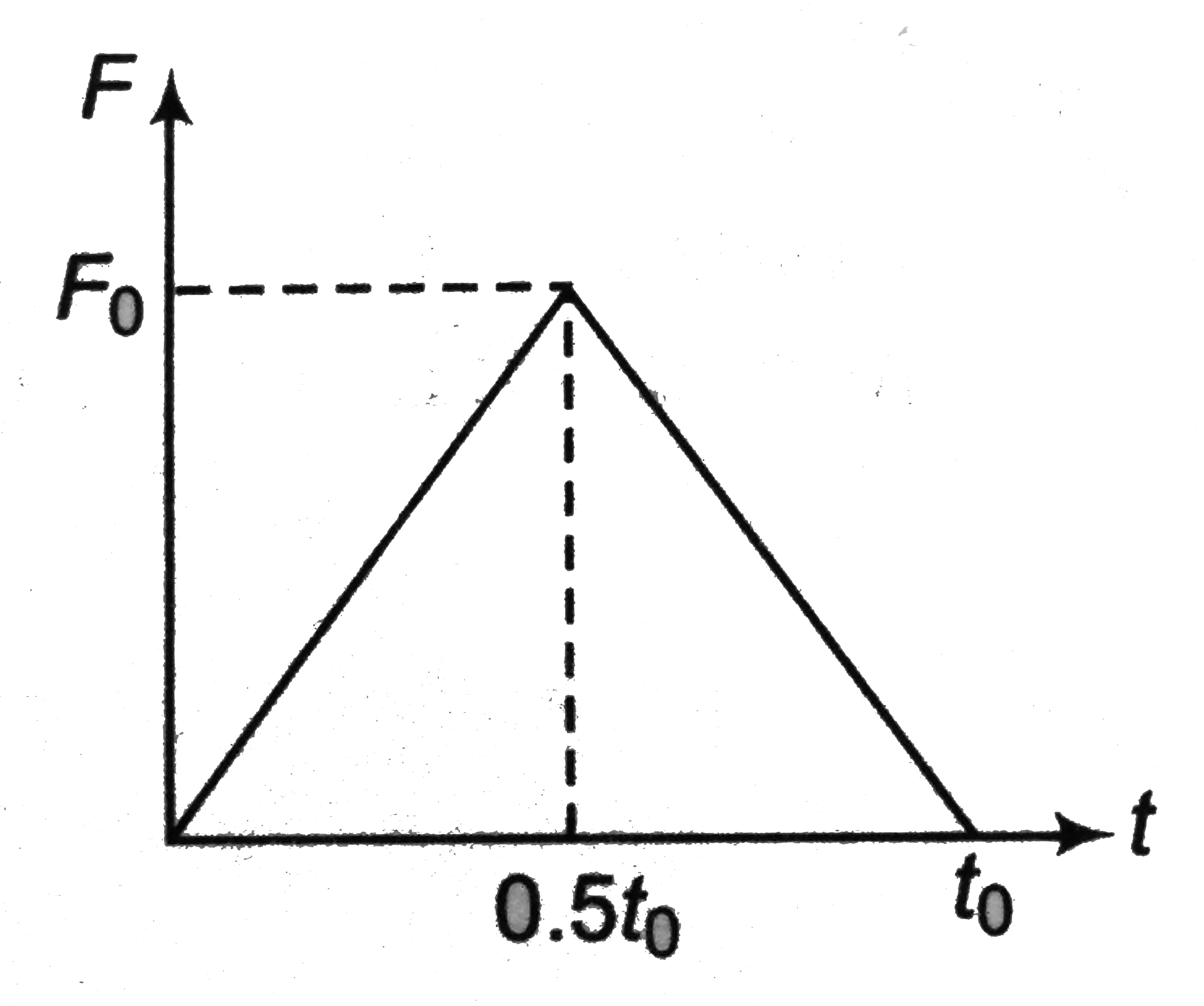A body of mass m is moving with speed v makes a one-dimensional collision with a stationary body of same mass on a horizontal table . They are in connect for the a very small time interval Δt. The contact force between them varies varies as shown in the graph. ( Neglect friction)

The coefficient of restitution for the collision will be
34
12
23
14
The correct Answer is:B
Step by step video, text & image solution for A body of mass m is moving with speed v makes a one-dimensional collision with a stationary body of same mass on a horizontal table . They are in connect for the a very small time interval Deltat. The contact force between them varies varies as shown in the graph. ( Neglect friction) The coefficient of restitution for the collision will be by Physics experts to help you in doubts & scoring excellent marks in Class 12 exams.
Updated on:21/07/2023Topper's Solved these Questions
Similar Questions
A body of a mass m moving with speed v collides elastically head on with another body of mass m, initially at rest. Show that the moving body will come to a stop after collision.
View SolutionA body of mass m1 is moving with a velocity V. it collides with another stationary body of mass m2. They get embedded. At the point of collision, the velocity of the system.
View Solution
Knowledge Check
A body of mass m moving with velocity v makes a head-on collision with another body of mass 2 m which is initially at rest. The loss of kinetic energy of the colliding body (mass m ) is
A12 of its initial kinetic energyB19 of its initial kinetic energyC89 of its initial kinetic energyD14 of its initial kinetic energyA body of mass m moving with velocity v makes a head-on collision with another body of mass 2 m which is initially at rest. The loss of kinetic energy of the colliding body (mass m ) is
A12 of its intial kinetic energyB19 of its initial kinetic energyC89 of its initial kinetic energyD14 of its initial kinetic energyA body of mass m1 is moving with a velocity V. it collides with another stationary body of mass m2. They get embedded. At the point of collision, the velocity of the system.
AincreasesBdecreases but does not become zeroCremains sameDbecome zero
A body of mass 2 m moving with velocity v makes a head - on elastic collision with another body of mass m which is initially at rest. Loss of kinetic energy of the colliding body (mass 2 m) is
View SolutionA body of mass m moving with a velocity v in the x direction collides with another body of mass M moving in y direction with a velocity V. They coalesce into one body during collision.
View SolutionA body of mass m having an initial velocity v , makes head on collision with a stationary body of mass M . After the collision, the body of mass m comes to rest and only the body having mass M moves. This will happen only when
View SolutionA ball of mass m moving with a speed v makes a head on collision with an identical ball at rest. The kinetic energy after collision of the balls is three fourth of the original kinetic energy. The coefficient of restitution is
View SolutionA particle of mass m moving with velocity u makes an elastic one-dimensional collision with a stationary particle of mass m. They come in contact for a very small time t0. Their force of interaction increases from zero to F0 linearly in time 0.5t0, and decreases linearly to zero in further time 0.5t0 as shown in figure. The magnitude of F0 is

View Solution
